 |
 |
 |
| |
Dolutegravir with recycled nucleoside reverse transcriptase inhibitors maintains better viral suppression than protease inhibitor based antiretroviral therapy over 144 weeks: VISEND Trial
|
| |
| |
AIDS 2024 July 20-26 Munich
S. Sivile1,2,3, S. Fwoloshi1,2,3, D. Engamba1,4, A. Mweemba4,1, M. Siwingwa1,3, D. Kampamba1,2, M. Mbewe1, A.P. Kumar1, N. Mbewe1,5, H. Phiri2, A. Shibemba1, B.P. Haabanji1, E. Mwamba1, B. Simons6, C.W. Wester7,8, L. Chirwa1, A. Hill9, L. Mulenga1,3,2,7,8
Institutions
1University Teaching Hospital, Adult Infectious Diseases Center, Lusaka, Zambia, 2Ministry of Health, Division of Infectious Diseases, Lusaka, Zambia, 3University of Zambia, School of Medicine, Division of Infectious Diseases, Lusaka, Zambia, 4Levy Mwanawasa Medical University, Division of Infectious Diseases, Lusaka, Zambia, 5Zambia National Public Health Institute, Lusaka, Zambia, 6London School of Economics & Political Science, London, Zambia, 7Vanderbilt Institute for Global Health, Nashville, United States, 8Vanderbilt University Medical Center, Department of Medicine, Division of Infectious Diseases, Nashville, United States, 9Liverpool University, Department of Translational Medicine, Liverpool, United Kingdom
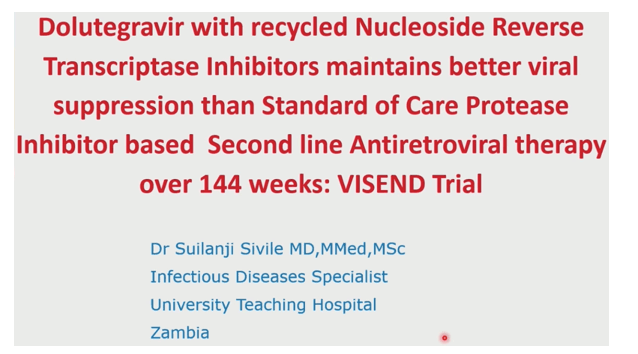
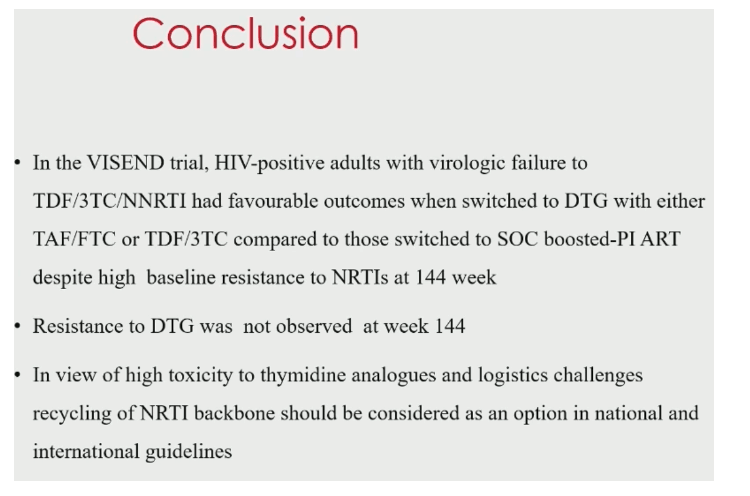

ABSTRACT
BACKGROUND: Dolutegravir (DTG) is recommended for both first and second line antiretroviral therapy (ART). Despite emerging evidence on positive clinical outcomes among individuals failing NNRTI-based ART and switched to DTG-based regimens with maintained NRTIs, there is paucity in data on longer-term outcomes. We hereby report the 144-week outcomes of the VISEND trial.
METHODS: We conducted a 144 week, randomized, open-label, phase 3 non-inferiority trial >bin Zambia. We randomized adults with viral load (VL) < 1000 copies/mL on tenofovir disoproxil fumarate (TDF), lamivudine (3TC) plus efavirenz (EFV) or nevirapine (NVP) to TDF,3TC,DTG (TLD) or tenofovir alafenamide fumarate (TAF), emtricitabine (FTC), DTG (TAFED) [Arm A]. Participants with VL < 1000 copies/mL were randomized to TLD or TAFED or standard-of-care (SOC) second line comprising Lopinavir/ritonavir (LPV/r) or atazanavir/r (ATV/r), zidovudine (ZDV), 3TC [Arm B]. Primary end point was VL <1,000 copies /mL (viral suppression (VS)), assessed using the FDA snapshot algorithm (intent-to-treat (ITT) population). Noninferiority was tested with a margin of 10 percentage points.
RESULTS: Of 1,201 participants, 99% in Arm A maintained viral suppression on both TLD and TAFED [difference, -0.0%, 95% CI -0.02- 0.02] at week 144. In Arm B, 98% TLD-treated adults achieved VS, compared to 96% for TAFED and 89% for 3TC/ZDV/PI/r. Noninferiority of switching to both DTG-based arms was achieved compared to the SOC (TLD versus ZDV/3TC/PI/r difference, 9.9% [5.9 - 13.9]; TAFED versus ZDV/3TC/PI/r difference, 8.8% [4.7 – 12.9]). The baseline prevalence of tenofovir and lamivudine/emtricitabine associated resistant mutations was 56% (204/363) and 75%, (273/363) respectively. In those randomised to TDF/3TC/DTG and TAF/FTC/DTG, 61% and 52% had no predicted tenofovir activity respectively; whereas 75% had no predicted lamivudine or emtricitabine activity in both groups. There was no major resistant mutations to DTG but 26 to bPI and 32 to NRTIs among those with virologic failure over the study period.
CONCLUSIONS: In the VISEND trial, HIV-positive adults with virologic failure to TDF/3TC/NNRTI, had favourable outcomes when switched to DTG with recycled NRTIs compared to those switched to SOC boosted-PI despite high baseline resistance to NRTIs. No emergent INSTI mutations were reported at week 144. We recommend recycling of TDF(TAF)/3TC with DTG following failure.

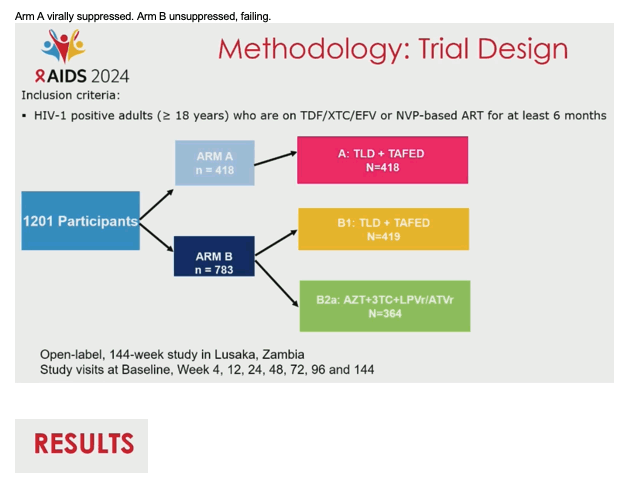
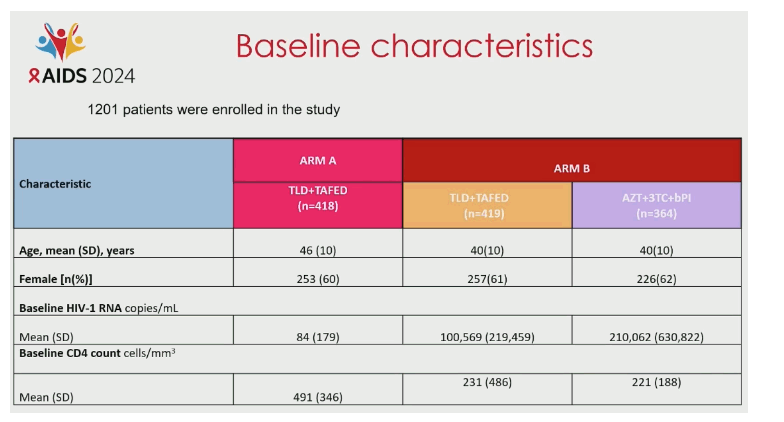
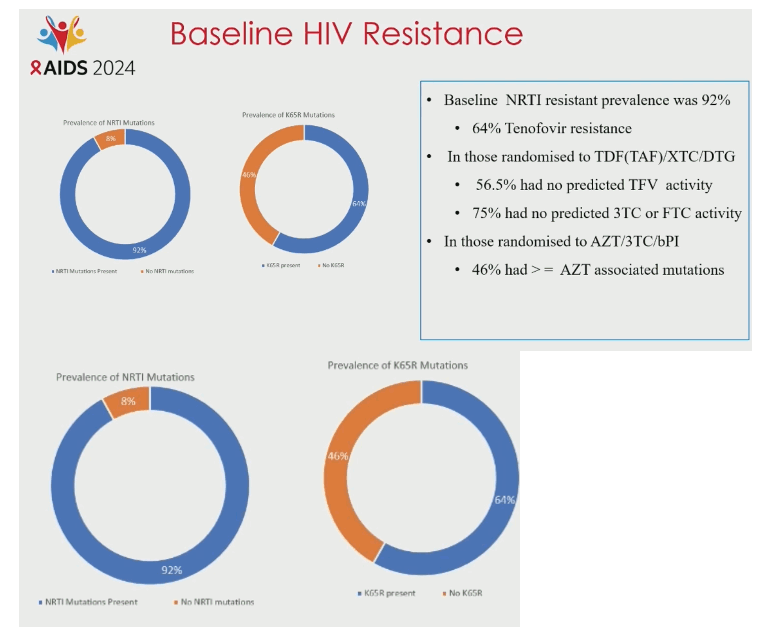

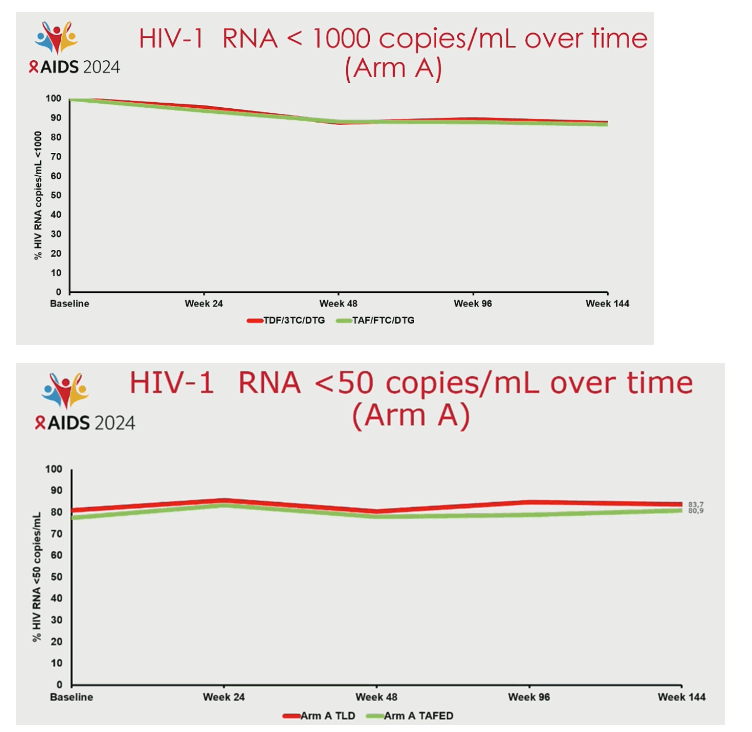
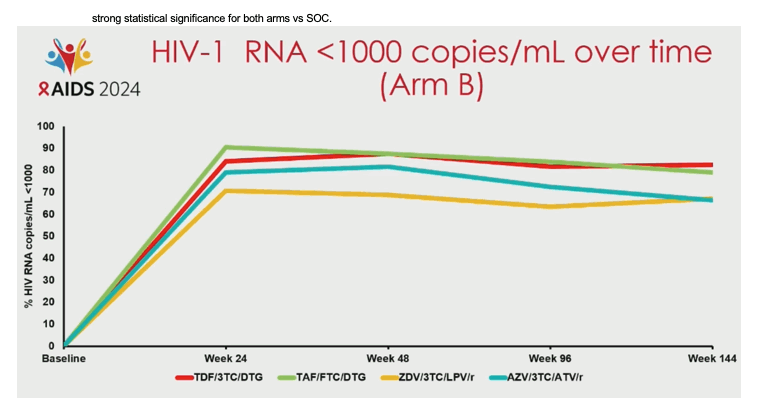
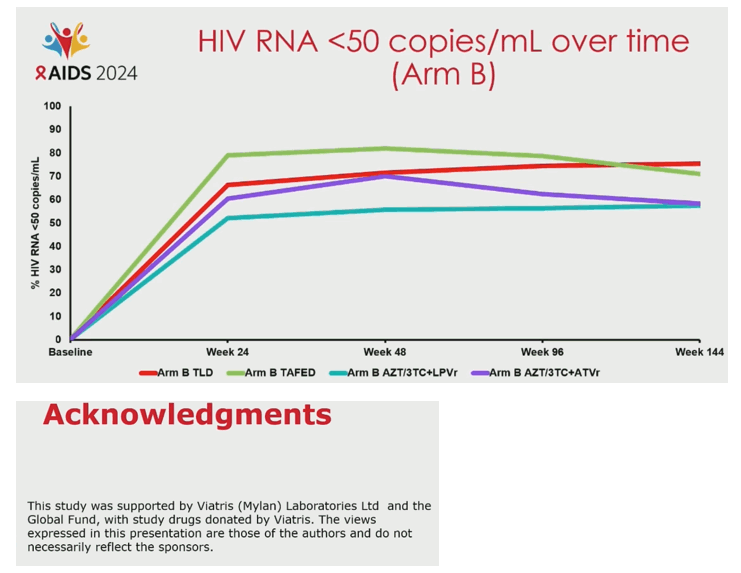
|
| |
|
 |
 |
|
|